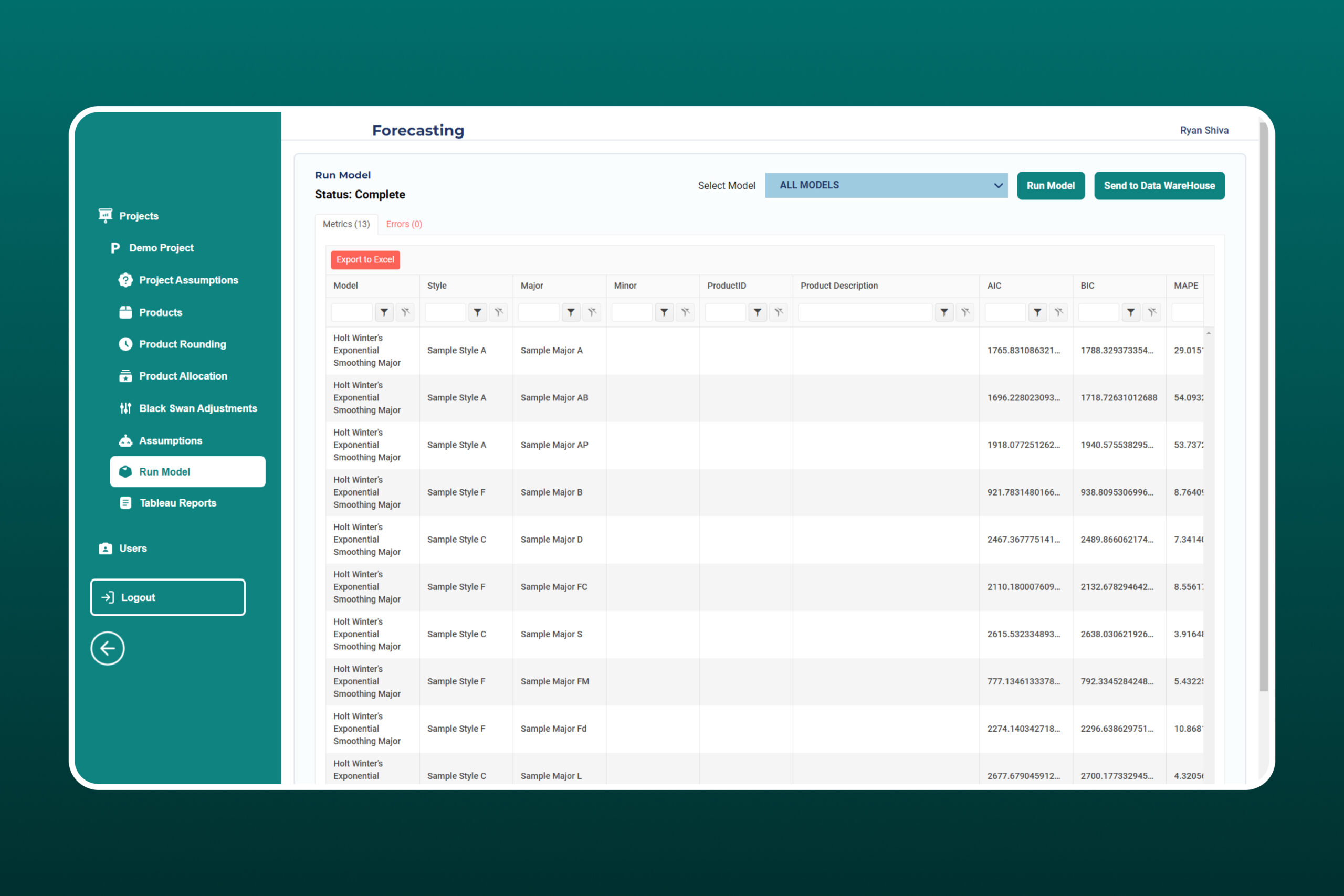From SQL to Databricks: Creating Dynamic Dashboard Visualizations
In today’s fast-paced business world, organizations are constantly seeking ways to harness the power of their data to drive insights and make informed decisions.
Charting the Course of Dairy Sales with Advanced Analytical Solutions.
Home / Case Studies / Forecasting the Future: AI and ML Reshape Artisanal Sales
Our client, a renowned artisan in the dairy industry, has established a legacy of crafting exceptional Italian cheeses. Their expertise extends from traditional varieties to contemporary favorites, catering to top-tier pizzerias and Italian eateries nationwide. Beyond their famed cheese products, they also innovate in specialty whey ingredients, enhancing the nutritional and textural qualities of various food products. At the core of their operations lies a commitment to sustainable practices, community engagement, and environmental stewardship, making them a distinguished example of excellence and responsible business in the dairy sector.
The client faced the challenge of modernizing their sales forecasting process. Their existing system, heavily reliant on traditional methods and manual inputs, was not equipped to efficiently handle the complex variables impacting sales. This included adjusting for unique market events and integrating intricate market intelligence data. The need was for a sophisticated, yet user-friendly forecasting model that could accurately predict future sales, taking into account a myriad of factors such as seasonal trends, special market events, and evolving consumer preferences.
The client faced the challenge of modernizing their sales forecasting process. Their existing system, heavily reliant on traditional methods and manual inputs, was not equipped to efficiently handle the complex variables impacting sales. This included adjusting for unique market events and integrating intricate market intelligence data. The need was for a sophisticated, yet user-friendly forecasting model that could accurately predict future sales, taking into account a myriad of factors such as seasonal trends, special market events, and evolving consumer preferences.
In response to the complex needs of the client, a robust and intuitive web-based application was developed to revolutionize their sales forecasting process. This solution was intricately designed to encompass the full spectrum of forecasting requirements, from data ingestion and processing to advanced analytics and user interaction. Here’s a detailed breakdown of the key components of the solution:

The project was brought to fruition by a multidisciplinary team comprising data scientists, software developers, project managers, and other key stakeholders. The data scientists played a crucial role in statistical modeling and data analysis, while the developers focused on building the web application and integrating the models into it. Project managers oversaw the workflow, ensuring timely delivery and alignment with project goals.
Utilizing an agile methodology, the development process was organized into iterations, each one producing an increment of the product. Regular meetings and reviews ensured the product met the client’s needs and expectations.
The testing strategy encompassed various stages, including unit testing, integration testing, and user acceptance testing. Data scientists were involved in testing the accuracy and performance of the forecasting models, while developers focused on the application’s functionality and user interface.
Rigorous testing ensured the reliability of the forecasts and the overall performance of the web application. Feedback loops were established to gather insights from users and stakeholders, further refining the application.
The project was brought to fruition by a multidisciplinary team comprising data scientists, software developers, project managers, and other key stakeholders. The data scientists played a crucial role in statistical modeling and data analysis, while the developers focused on building the web application and integrating the models into it. Project managers oversaw the workflow, ensuring timely delivery and alignment with project goals.
Utilizing an agile methodology, the development process was organized into iterations, each one producing an increment of the product. Regular meetings and reviews ensured the product met the client’s needs and expectations.
The testing strategy encompassed various stages, including unit testing, integration testing, and user acceptance testing. Data scientists were involved in testing the accuracy and performance of the forecasting models, while developers focused on the application’s functionality and user interface.
Rigorous testing ensured the reliability of the forecasts and the overall performance of the web application. Feedback loops were established to gather insights from users and stakeholders, further refining the application.
Would you like to discuss how Xorbix Technologies, Inc. can help with your enterprise IT needs.
In today’s fast-paced business world, organizations are constantly seeking ways to harness the power of their data to drive insights and make informed decisions.
Informatica, a leading data integration platform, has been a cornerstone for our client’s big data workflows.
The software development industry is constantly evolving with new technologies, tools, and methods, shaping the way software is created.
One Inc’s ClaimsPay integration is our major Midwest headquartered Insurance provider client’s ambitious electronic payment integration project.

In today’s fast-paced business world, organizations are constantly seeking ways to harness the power of their data to drive insights and make informed decisions.


The software development industry is constantly evolving with new technologies, tools, and methods, shaping the way software is created.

One Inc’s ClaimsPay integration is our major Midwest headquartered Insurance provider client’s ambitious electronic payment integration project.












